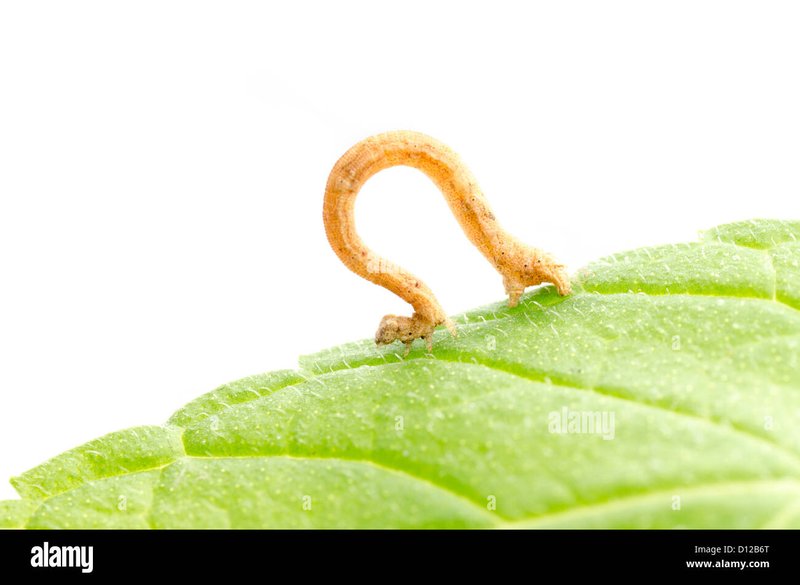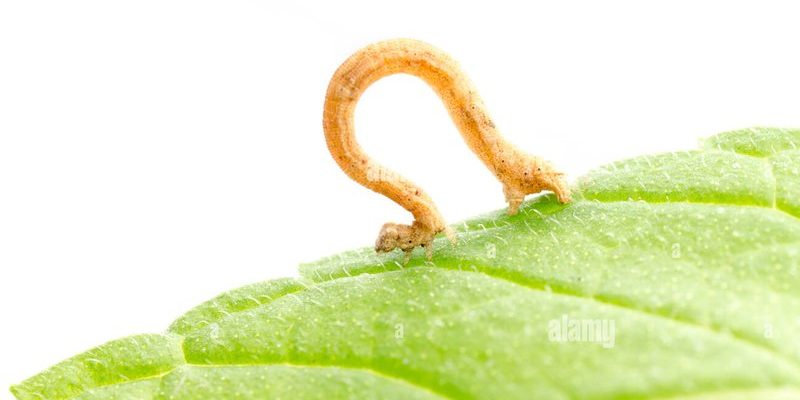
Let’s dive into the world of these fascinating creatures. You might be wondering why it’s important to tell them apart. Well, understanding the differences between inchworms and loopers can be helpful, especially if you’re a gardener or just curious about nature. So grab a cup of coffee, and let’s explore the unique traits of these fascinating little crawlers!
What Are Inchworms?
Inchworms, also known as measuring worms, belong to the **Geometridae** family. What makes them stand out is their unique way of moving. They have a habit of arching their backs and creating a loop with their bodies, which is where the name “looper” comes from—not to be confused with loopers, but more on that soon! They can be quite small, often about an inch or two long, and are typically green or brown, helping them blend into the leaves and branches.
Their method of locomotion is amusing to watch. They inch forward by using only a few segments of their bodies to move, making it look like they’re measuring the ground as they go. **Inchworms** typically feed on the leaves of trees and shrubs, munching away quietly until they are ready for their next phase of life: becoming a moth.
Inchworm Lifecycle
The lifecycle of an inchworm is fascinating. They start as eggs, which hatch into caterpillars. After several weeks of feeding, they enter the **pupal stage**, where they transform into a moth. This metamorphosis can take anywhere from a few weeks to several months, depending on the species and environmental conditions. Once they emerge, these moths often have beautiful patterns on their wings, which can be a delight to see in your backyard.
Inchworms serve an important role in the ecosystem. They’re a food source for various birds and other predators. So while they might seem like little pests to some, they’re a crucial part of the food web.
What Are Loopers?
On the other hand, loopers also belong to the Geometridae family but are often referred to specifically as **”loopers.”** They share similar traits with inchworms, particularly in their unique method of movement. Like inchworms, loopers move by forming a loop with their bodies. However, they often have a more pronounced looping motion, making them look like they’re trying to dance. You might spot them on your plants, as they tend to be more noticeable due to their colors and patterns.
Loopers can range in color from green to brown and even vibrant shades of yellow. They, too, have the ability to camouflage themselves, making them harder to spot. These caterpillars also consume leaves, but they often prefer different plants than inchworms do. If you’re an avid gardener, you might find them munching on your prized flowers.
Looper Lifecycle
The lifecycle of a looper is quite similar to that of an inchworm. They start as eggs and then hatch into caterpillars. Their feeding phase lasts several weeks, just like inchworms. Eventually, they, too, move into the pupal stage, where they transform into moths. The timing and duration of this transformation can vary, influenced by environmental factors and species.
One interesting aspect of loopers is that some species can cause significant damage to crops. Understanding the differences between inchworms and loopers can be beneficial for gardeners who want to protect their plants from potential harm.
Key Differences Between Inchworms and Loopers
So, how do you really tell these two apart? Here are the main differences you should look for:
- Movement: While both inchworms and loopers use a looping motion, inchworms tend to “measure” the ground as they move, while loopers have a more pronounced dance-like motion.
- Feeding Habits: Inchworms prefer certain trees and shrubs, whereas loopers might go for a wider variety of plants, including flowers and vegetables.
- Coloration: Inchworms are typically muted in color to blend into their surroundings, while loopers can often be seen with brighter or more vibrant colors.
- Damage Potential: While both can munch on leaves, some looper species are known for causing more significant damage to crops.
By observing these characteristics, you’ll be better equipped to identify which critter you’re dealing with next time you spot one on your plants!
Why Knowing the Difference Matters
Understanding the difference between inchworms and loopers can be more important than you might think, especially for gardeners and nature enthusiasts. If you’re trying to maintain a healthy garden, knowing what kind of critters you’re dealing with gives you a leg up on managing them.
For instance, if you identify loopers in your garden and recognize their potential for damage, you might choose to take preventive action, like using natural pest deterrents or encouraging beneficial predators. In contrast, knowing that inchworms are less harmful could ease your worries and help you appreciate their role in nature.
Tips for Dealing with Inchworms and Loopers
If you find yourself with a few inchworms or loopers on your plants, here are some gentle methods to manage them:
- Handpicking: You can gently remove them and relocate them away from your prized plants.
- Natural Predators: Encourage birds and beneficial insects that like to snack on these caterpillars.
- Pest Deterrents: Use organic sprays or neem oil to deter them without harming your plants.
These methods keep your garden healthy while being friendly to the environment!
Final Thoughts
Inchworms and loopers may seem similar, but they each have unique traits that help them thrive in their environments. Whether you’re enjoying a peaceful moment in nature or trying to keep your garden lush and green, being able to distinguish between these two caterpillars adds a layer of appreciation to your experience. Plus, knowing how to manage them effectively can save your plants from potential damage.
Next time you’re out and about, take a moment to observe these fascinating creatures. You might find you enjoy the little things in nature just a bit more!

